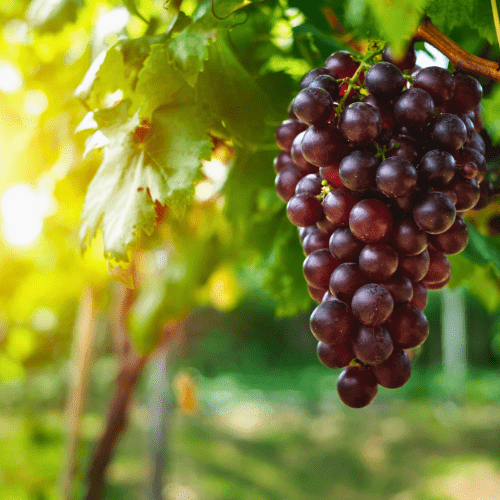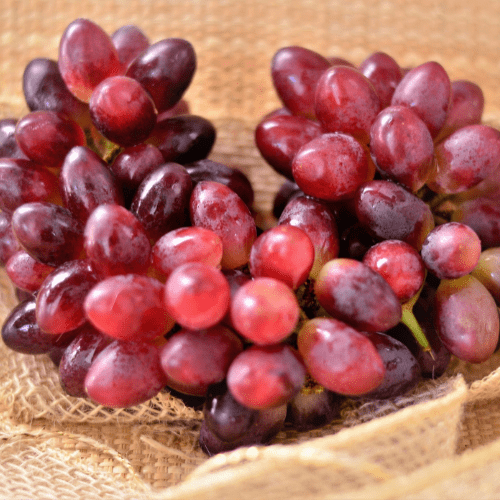Position
Aim for an area that receives full sun for at least 6-8 hours daily to ensure optimal growth. Ensure there’s adequate space for the vines to spread and for support structures, such as trellises. This will help the plants thrive and produce a bountiful harvest of fruit.
Soil
Use well-draining sandy loam fertile soil with a pH of 6.0 to 6.8 for optimal growth. Plant the vines 2-3 inches below the soil surface to protect the roots. Space each vine 6-8 feet apart to allow for adequate airflow and growth. This spacing helps prevent diseases and promotes healthy development.
For container-grown grapes, ensure pots have drainage holes and use a quality potting mix. This prevents waterlogging and supports healthy root systems.
Watering
Regular watering is crucial, especially during dry spells. Aim for deep watering sessions to encourage strong root growth. This method helps the plants establish themselves and withstand periods of drought more effectively.
Mulching
Add a thick layer of pine bark mulch, keeping it about 20 to 30 centimetres away from the tree trunk itself (any closer and it may cause excess moisture to damage the trunk). This will retain the moisture in the soil and will prevent weeds from taking over.
Fertilizing
Use our slow-release nitrogen-rich all plant fertiliser Apply 1 teaspoon every 4-5 months. The roots will absorb what they require
Pruning
Pruning is essential for maintaining healthy vines. The best time to prune is late winter or early spring, just before new growth begins. Focus on removing dead or overcrowded wood to promote airflow. This practice helps reduce disease risk and encourages better fruit quality.
Pests & Diseases
Aphids, citrus psylla, red scale, citrus greening. Spraying regularly with Agricultural Neem Oil or Effective Microorganisms (EM Control ) will assist in either prevention or after the fact. If you already have aphids or mites, wash the tree with a harsh hosing, and when dry, spray with Neem oil or EM Control.
Practice good garden hygiene (remove fallen fruit and leaves).
Watch for root rot (if overwatered) and fungal infections during wet periods.
Harvest
Harvest ripe grapes in late summer for the best flavour and nutritional benefits.






